
The Top 7 Customer Survey Format Examples
By 2025 companies with the highest customer satisfaction ratings are planning to wipe out the stereotype that they don’t value customer feedback.
In the book How Every Great Company Listens to the Voice of the Customer, companies like Enterprise and Petco serve as case studies for how customer satisfaction helps you predict your company’s performance. Because high satisfaction is continuously linked to better financial performance.
Download Now: Partner with your VP of Ops to knock out negative stereotypes and improve customer satisfaction with these 7 projects.
But it can be tricky to gather all the feedback you need then implement the changes your customers really want. To get the best intel, you have to come up with the right customer survey format to collect the data you need. You have to value your customers’ time and give them a compelling reason to share feedback.
Today, we’re walking through a few example customer survey formats. It only took a quick scan of our email inboxes to find the surveys that make us block off time on our calendar (and those that stay in inbox wasteland).
We’re sharing the few that stood out to us in a sea of surveys. Prepare yourself, pictures of puppies included.
Lyft – Cover the basics.
For starters, in big, bold letters Lyft tells customers that their opinions matter. The Lyft CSAT survey was friendly and approachable. They got to the point, set time expectations, proved value AND asked for help, all in 19 words.
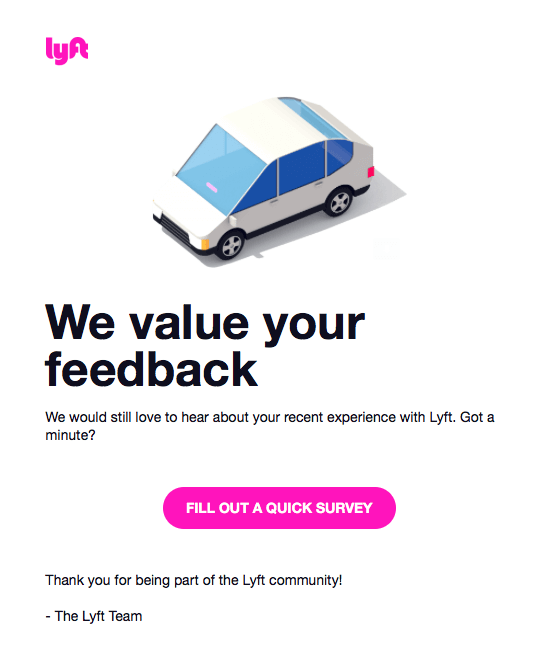
More importantly, the survey actually met those time expectations. One question required a quick, scale-based response paired with an optional block for open-ended feedback. The minute of your time that Lyft asks for was easily an over-estimate of the time needed to fill out the survey. Agreeing to a one-minute time commitment and coming out with 30 seconds to spare? Score.
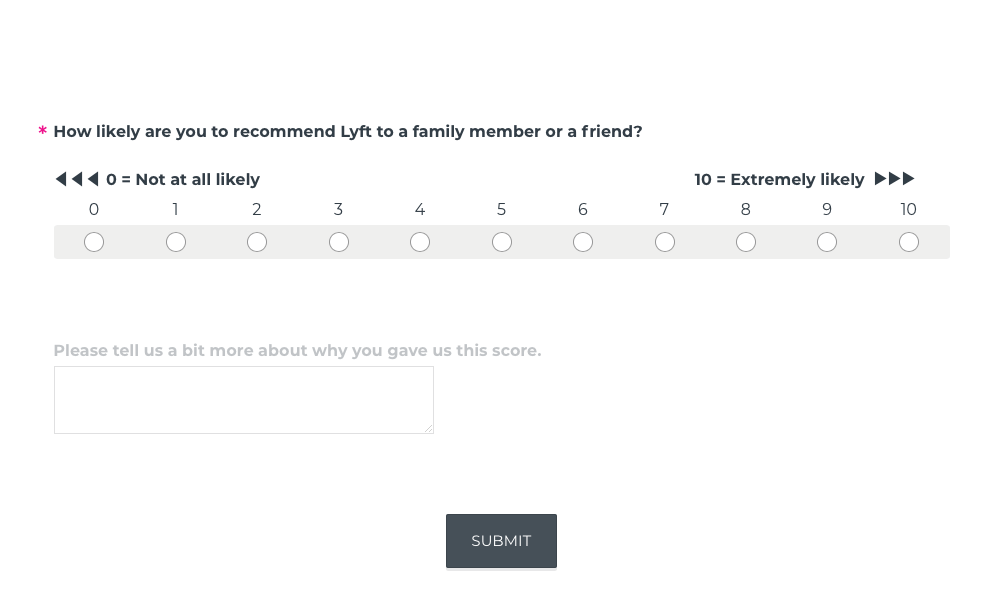
Learn what you should be asking on your CSAT Surveys. Check out our five favorite CSAT survey questions.
Petco – The timing was right.
A puppy + a kitten + a cute pet pun = survey responses.
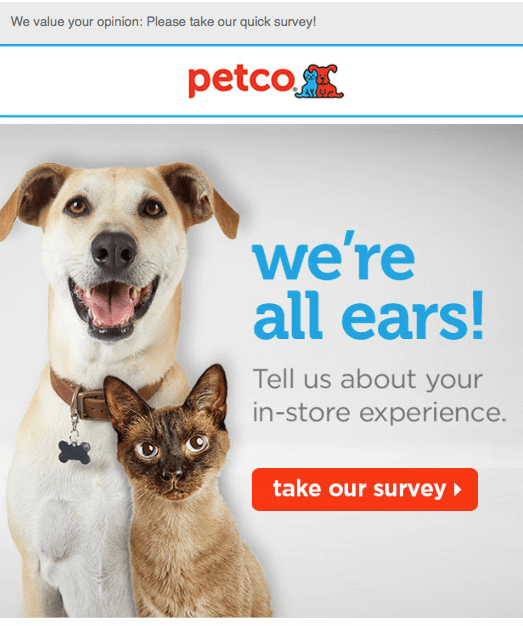
Kidding. (Kind of.) More than just the cute pets made this survey stand out. Here, we’re really focusing on the value of the survey request over the survey questions. Petco optimized the frequency of their CSAT survey. Which for me, a frequent Petco shopper with three pets, was helpful. I go to Petco… a lot. And if a satisfaction survey hit my inbox after every visit, I’d be annoyed to say the least. Instead, I get surveys about my experience about every two months.
Next, what stood out to me with this customer survey format was the focus on my in-store experience. I shop both in-store and online, and the experiences are very different. Petco made it a point not to blur the lines between these two experiences. They were focusing on data to shape one, very specific shopping experience.
As we can learn from a recent Nordstrom story, you may be stellar at in-store experiences but not-so-great online. You need specific feedback to optimize each experience individually for your customers.
Learn how to master omnichannel so you deliver consistently great experiences, no matter the channel.
Rent the runway – Now, that was easy.
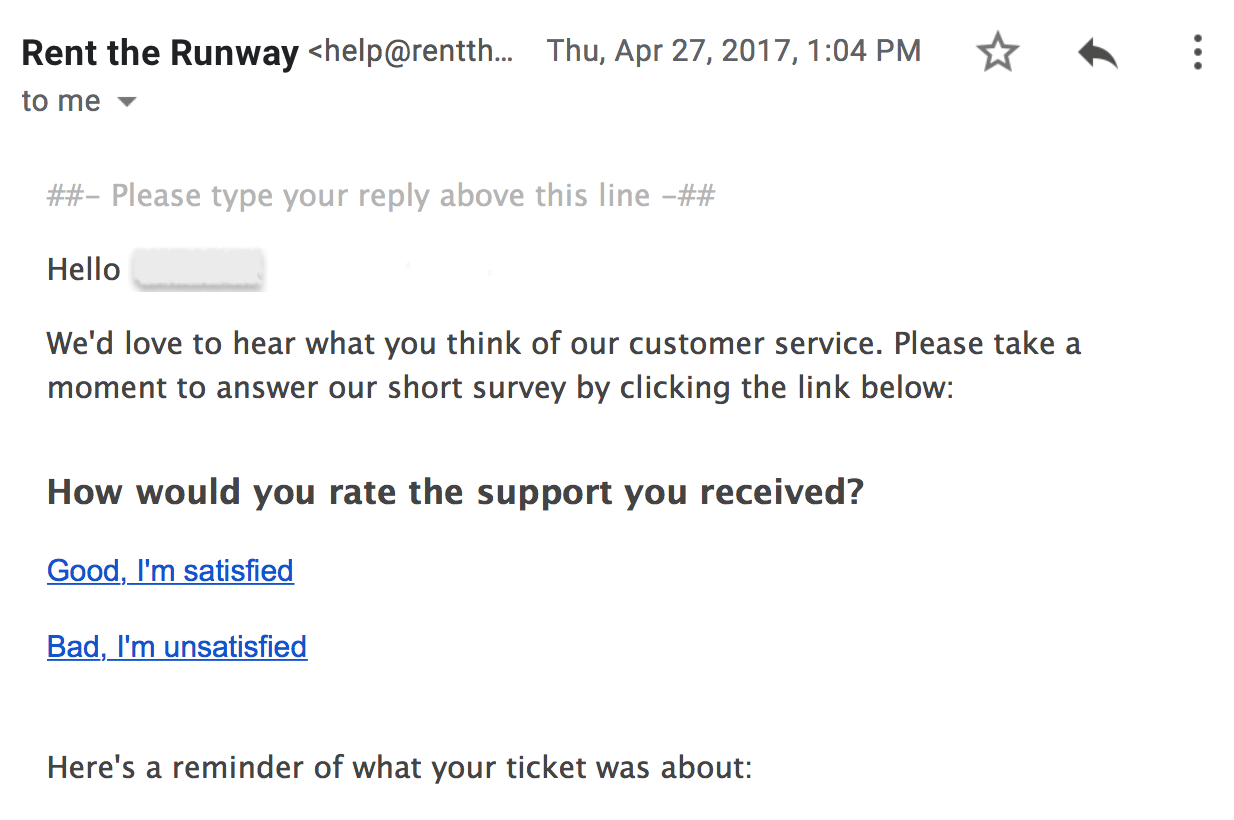
This survey doesn’t take much explanation. It’s that simple. Not only did Rent the Runway’s survey live in the body copy of the email they sent to customers, but it had a full transcript of the customer-agent interaction along with it.
If you didn’t remember your service experience right off the bat, you could skim the transcript to jog your memory and get details about your conversation with a specific agent. Genius.
Want to use transcriptions in your surveys, too? Hop to our transcriptions tool to check it out.
ClusterTruck – Longer commitment, better reward.
First off, check out ClusterTruck’s email subject line for their survey: “Will you help us?” They made customers feel important before they even opened the email.
ClusterTruck used their survey as an opportunity to collect more detailed information from a specific group of customers, so they could learn more about what their customers value. Instead of a short survey with a few questions, they offered up a monetary incentive to entice customers to participate in a 20-minute survey.
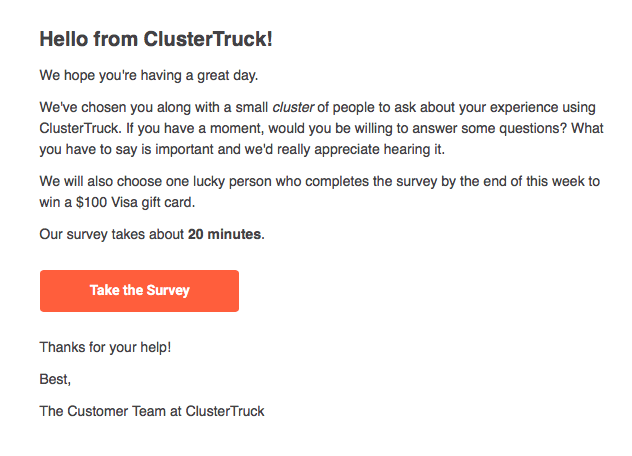
While not every customer is going to commit to a 20-minute survey, you can use data and analytics to target your most engaged customers for an in-depth survey format. Better targeting paired with a chance of a monetary incentive can bring incredibly valuable feedback about what’s important to your most trusted customers.
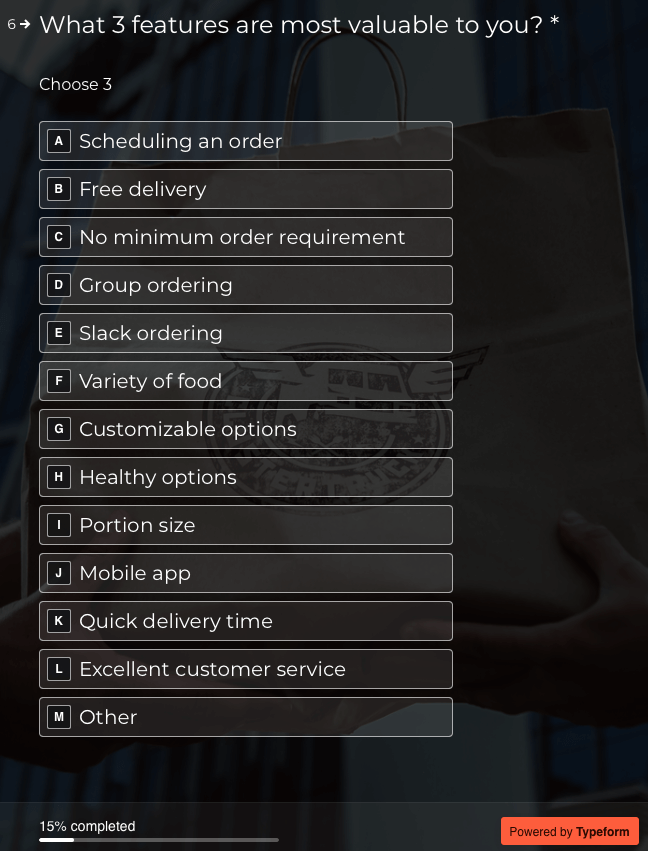
While incentives with a dollar amount can skew results to simple surveys, it’s an important offering when you’re asking more from your customers. And, you can use a few different quality control methods to make sure the responses you get are genuine. For example, if your survey is multiple choice, ask a question that says, “Please select the letter C for your answer to this question.” If the customer doesn’t select “C” you know they weren’t reading each question carefully. It’s safe to throw those responses out.
Let us handle the surveys for you. Check out Sharpen’s approach to Customer Surveys.
Starbucks – A little reminder never hurt.
Starbucks knows their audience. They have locations worldwide, and people often frequent multiple stores, multiple times per week.
To combat any memory fog, they put the date of the customer’s last in-store visit, along with a reminder of the store location front-and-center in the survey email.
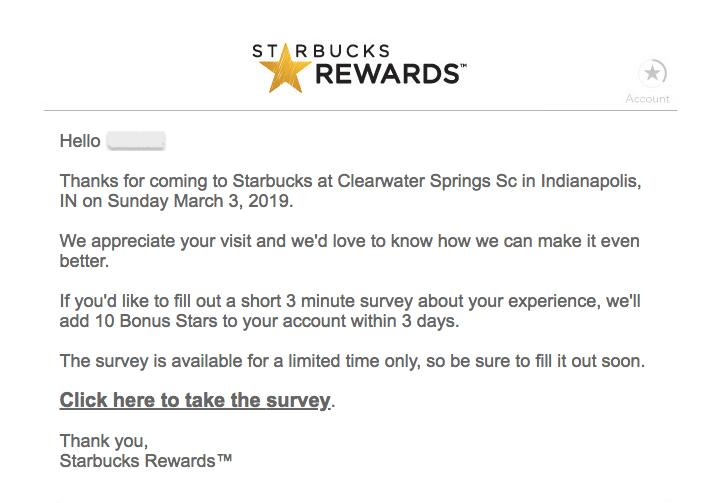
They also have a unique customer survey format. They ask a few more questions than the typical two-question survey we see, but they format all the questions in a grid. The grid makes the questions quick to read and answer. They get more information from customers but don’t tack on a huge time commitment.
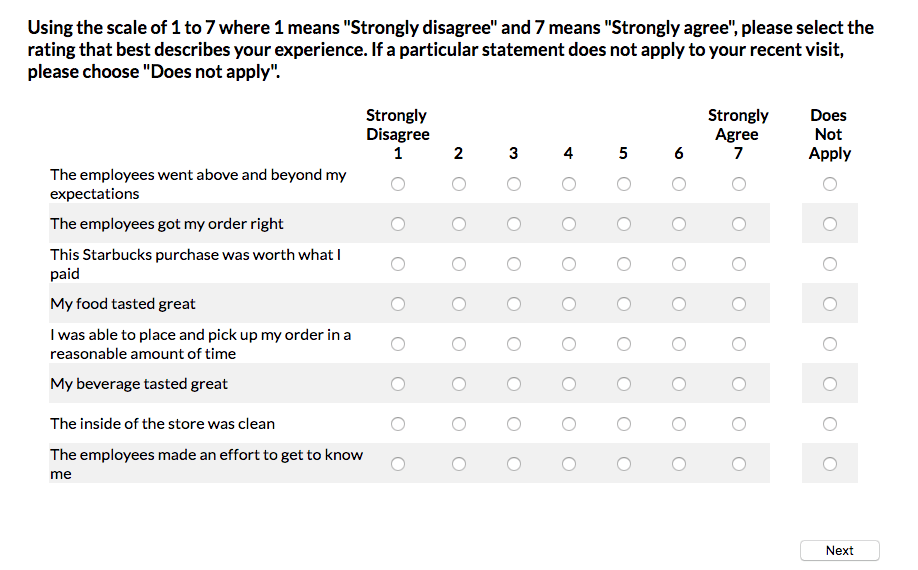
Plus, as the latte foam on top, they offer 10 bonus loyalty stars to participants. (For those who don’t frequent Starbucks, loyalty stars pile up to get you free food and drink items).
ProFlowers – Promises go a long way.
ProFlowers‘ survey is incredibly simple, and it follows the two-question format we see so often. They have one scale-based question followed by an open-ended block for more feedback.
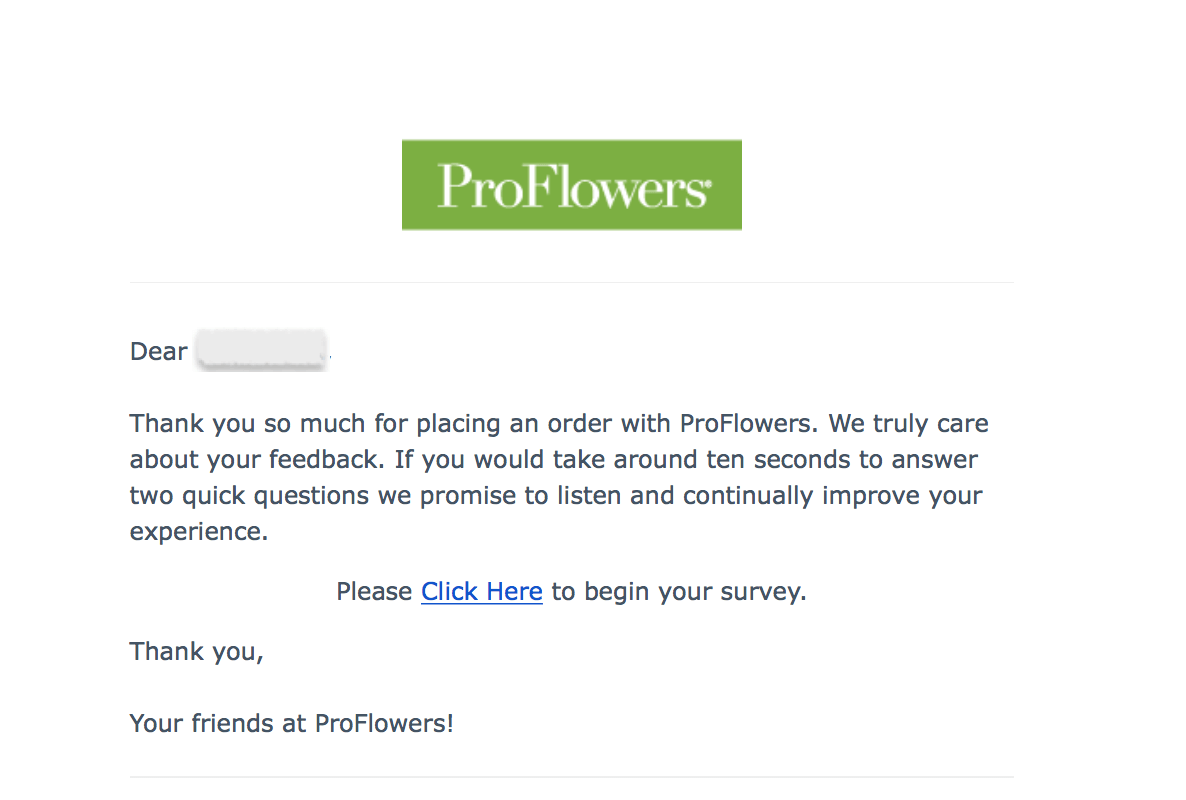
What they did so well, though, was setting expectations and explaining value. They set expectations that the survey will only take 10 seconds. Then, they reinforce time commitment by telling customers it’s only a two-question survey.
As far as the value for customers goes, they made a promise. In exchange for 10 seconds of your time, they promise to keep improving your experience. They build trust with customers in this survey.
Use data from your customer journey to build customer experiences that match your customers’ needs. Get your guide.
Lively – What a conversation starter.
Lively only asks for a five-second time commitment. That’s hard to beat. And they use this survey as a way to check in with new customers. When you onboard new customers then never check in, they feel like another number on your sales spreadsheet.
Lively made it a point to re-establish a connection with a new customer while getting a quick dose of feedback in the process. Even better, they offered up an email and phone number and invited customers to start a conversation with them about how they can improve.
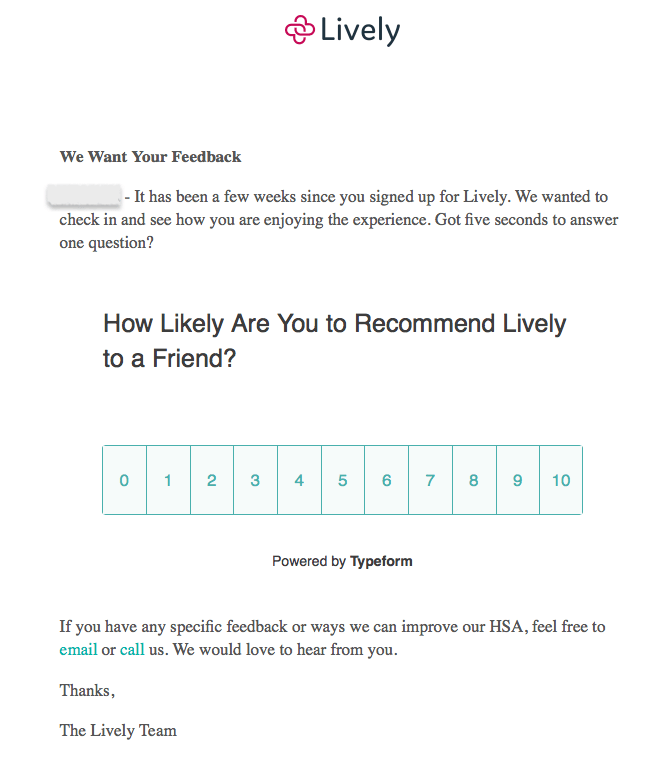
Put a giant check next to the box of making customer relationships more conversational.
These days, your customers are always-on. They’re working constantly and already have over-committed schedules. Getting them to take even a few minutes out of their days is just plain hard. To snag a bit of their time, make your survey’s easy and worth it.
Partner with your VP of Ops to knock out negative stereotypes and improve customer satisfaction with these 7 projects.
We originally wrote this post on March 7, 2019 and we updated it for fresh insight on July 2, 2020.

